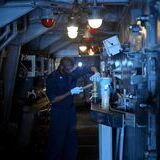Introduction to Failure Mode and Effects Analysis: FMEA
Failure Mode and Effects Analysis (FMEA) is a risk analysis through a structured proactive methodology that allows us to identify potential failure modes of a product, design, process or system before they reach the end customer. After identifying them, we have information that allows us to make decisions when allocating resources to prevent problems or mitigate their effects.
Brief history of the FMEA
The FMEA was developed in the late 1940's by the US military industry due to the multiple problems they were having during munitions manufacturing and proved to be very effective. Because of this in the late 1950's NASA took note and began to implement FMEA's for the planning of their projects being vital for the success of Apollo.
The automotive industry started using FMEA's in the 1970's after the Ford Pinto scandal, where the fuel tank was located just behind the rear axle, and with a slight bump it would catch fire. This caused Ford to begin introducing this methodology to improve the safety, design and production of its vehicles.
With the birth of the AIAG (Automotive Industry Action Group) in 1982, an open forum is established in which companies in the automotive industry develop and share information and agree on the use of standards for quality improvement methods, one of them being FMEA.
Today, FMEA is used as a tool in project development and serial life by all automotive manufacturers as well as competent suppliers. FMEA is also used right now in the civil aviation industry to assess aircraft safety risks.
After the automotive industry, FMEAs have also been applied to other sectors and many other companies use it with its relevant variants.
Types of FMEA
The different types of FMEA are shown below:
- System or functional FMEA: this is the highest level of analysis of an entire system in which it examines how its various subsystems could fail.
- Design FMEA: This type of FMEA evaluates potential failures (and customer effects) that may arise in the design of a product.
- Process FMEA: This type of FMEA analyzes the potential failures (and effects on the customer) that may arise in the manufacturing process of a product.
- Service FMEA: This is used to prevent service-related failures due to incorrect installation, operation, maintenance or repair. For example, a failure mode would be a tire that has excessive wear because it has not been maintained at the required pressure.
- Software FMEA: In this the potential failures of a given software are analyzed to ensure safety.
- Machine FMEA: This FMEA analyzes the risks of failures in the machines used in the manufacturing process.
Why is it important to carry out the FMEA?
The FMEA is very important to achieve excellence because it allows us to:
- Increase quality, reliability and safety in product design and manufacturing.
- Reduce costs by identifying product and process improvements in the early stages of development.
- Reduce the number of changes in the final stages of development, since having identified the failure modes before they occur, we have been able to take actions that allow us to save time and money.
- Identify the most critical failure modes to give them prevalence in the allocation of resources and take actions to mitigate them.
- It is a database of lessons learned: when new failure modes are found in a given process or design, they should be recorded in the generic FMEA so that in future projects, when their specific FMEA is developed, it will be taken into account. After all, it is a way to avoid stumbling over the same stone twice.
What is the RPN (Risk Priority Number)?
The Risk Priority Number (RPN) allows us to establish a hierarchy of failure modes by multiplying their severity, occurrence and detection (RPN = S x O x D). Thus, failure modes with higher NPRs will be identified as the most critical and should be given priority.
It could be said that in a given company the failures of concern are those that:
- Have a greater impact on the plant, customer or end customer, that is Severity.
- Those that have a higher probability of occurring, this is the Occurrence.
- Those that are more difficult to detect, this is Detection.
In the AIAG manual, the values for severity, occurrence and detection range from 1 to 10. We will go more deeply into the values in future posts.
Sectors other than automotive could adapt their tables to the reality of their business using different numbers, but always developing a standard so that all FMEA's of that business follow the same criteria. Otherwise, the information would not be valid for decision making.
It must be said that although the RPN has been used in AIAG for many years, it is now being replaced by a risk matrix that directly gives us high, medium or low risk level. A post will be dedicated to the explanation of this matrix.
The steps to be followed to carry out FMEA
Here we will briefly describe the steps to be taken when developing an FMEA:
- Establish a cross-functional team for the development of the FMEA with the participation of several areas.
- Review of the process or product: Here we will be helped a lot by flowcharts to subsequently develop the FMEA step by step.
- Brainstorm the possible failure modes in each step of the process.
- Establish what are the effects of these failure modes.
- Rank with a number the Severity of the effects of step 4.
- Rank with a number the Occurrence of the failure modes listed in step 3.
- Rank with a number the Detection of the failure modes listed in step 3.
- Calculate the RPN.
- Develop an action plan prioritizing those failure modes with higher NPR.
- Implement the planned actions.
- Re-evaluate the FMEA after implementation of the actions to get an idea of their effect.









